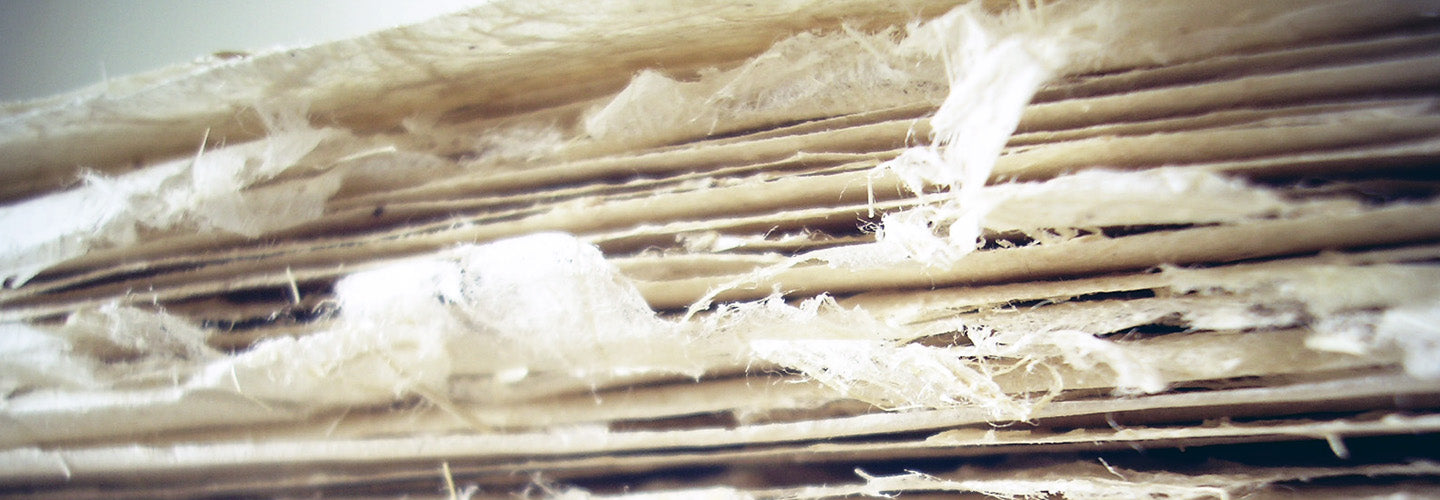
Qualities of Paper
Almost all our calligraphy is done on paper, so it’s a material we really care about.
This article offers advice, but in the end it’s down to you because even the “best” papers don’t suit everyone. The best tip is to be observant and critical, and take notes.


Qualities of paper that matter to us as calligraphers include:
WEIGHT. The weight of paper is described in grammes per square metre (gsm) in the UK – this is literally the weight in grammes of 1 square metre of the paper. The higher the number, the more substantial the paper.
It will be part of the information about the paper – a tissue paper might be 10gsm, a photocopy paper would be around 80gsm, a good watercolour paper could be 300gsm or more.
You may also see the weight in pounds (lbs) – again the higher the number the heavier the paper. A 140lb paper is the same as a 300gsm paper.
The heavier the paper, the more rough treatment it’ll take. If you’re working on a piece over several sessions, maybe choose a heavier paper, because it will stand up better to the handling (accidental creases in a paper can spoil a piece of work).
Sometimes the piece needs a certain weight of paper – for example if the paper is to hang freely, if it’s going to be bound into a book, if it needs to be see through or if it’s to have a painted background, that’ll steer you to a certain weight of paper.
Typically the heavier paper is more expensive, so for practice consider a lighter weight paper (e.g. 140gsm cartridge or 125gsm Zerkall deckle press paper).
COLOUR. Without even considering the world of coloured paper, notice how many “whites” there are. Sometimes you’ll want a bright white, other times a warmer shade.

SURFACE. Papers come in a variety of finishes from the almost shiny surface of layout paper, to the deeply rutted surfaces of some man made papers. The 3 finishes you’re likely to see are Rough, NOT (also known as cold pressed) and Hot pressed (HP).
A really smooth surface has a plastic or glass like feel under your pen and your pen is likely to slip around – not a good feeling.
A hot pressed paper is smooth, but has some “tooth” so you’re able to control the pen as it glides over the paper. Hot pressed paper is generally a good choice for calligraphy.
NOT and rough papers have their place too: the texture of the paper is likely to cause your letter strokes to have some gaps – which can be a beautiful addition to the liveliness of the work.

DIMENSIONS OF SHEET. Try to avoid having paper that is only just big enough for your needs. It’s much better to have a sheet which is safely too big for the size of your finished piece, so that when everything is finished you can the decide where to trim it to create the final piece.
You need enough paper to be able to create at least one rough on your “best” paper: ideally you will have enough to rule up two final pieces – just in case!
For practice try using A3 paper or larger, rather than cramming your practice onto small sheets of paper.
Great news – all 4 of these qualities can be assessed very accurately by looking at the paper. (Not quite so easy if you’re buying online, but for each paper we sell our website tells you about all of these qualities.)
There’s one more critical quality for us which is a combination of HARDNESS and ABSORBENCY. This is how the paper behaves when it receives wet ink – and it’s tricky to spot this without playing with the paper. The paper manufacturer adds something called size to the paper. As calligraphers we want a paper that is not at either extreme (tracing paper at the hard/unabsorbent is heavily sized, and blotting paper with no size is at the other).
Most watercolour papers behave fairly well, but this is the quality that can move a paper from being OK to either great or rubbish – and the only things you can do are seek the advice of other calligraphers, and get samples of the paper and play.
HANDMADE OR MACHINE MADE. The process used to make the paper gives it certain qualities. These include the strength of the paper (how easily it tears), the grain of the paper (whether there is a direction in which the paper naturally wants to fold) and deckle edges (compared to machine cut edges). For much of our calligraphic work these qualities are less important, but if you are book making or gluing papers or making use of the decorative edges then further research will be helpful.

LONGEVITY. If you are creating a piece that is likely to have a long life, you may also want to consider the archival quality of the paper. If this is important to you it may be worth talking to the paper provider – and remember that everything you use on or around the piece of paper needs to be archival too.
A final word of warning – there’s paper out there that says it is “calligraphy paper”. A few years ago such paper was about the WORST paper you could possibly buy. It has been improved greatly, but it is certainly not guaranteed to be the best paper for a calligrapher to use.
We have a great range of Paper in stock, suitable for all styles of Calligraphy. Shop the Range here.
